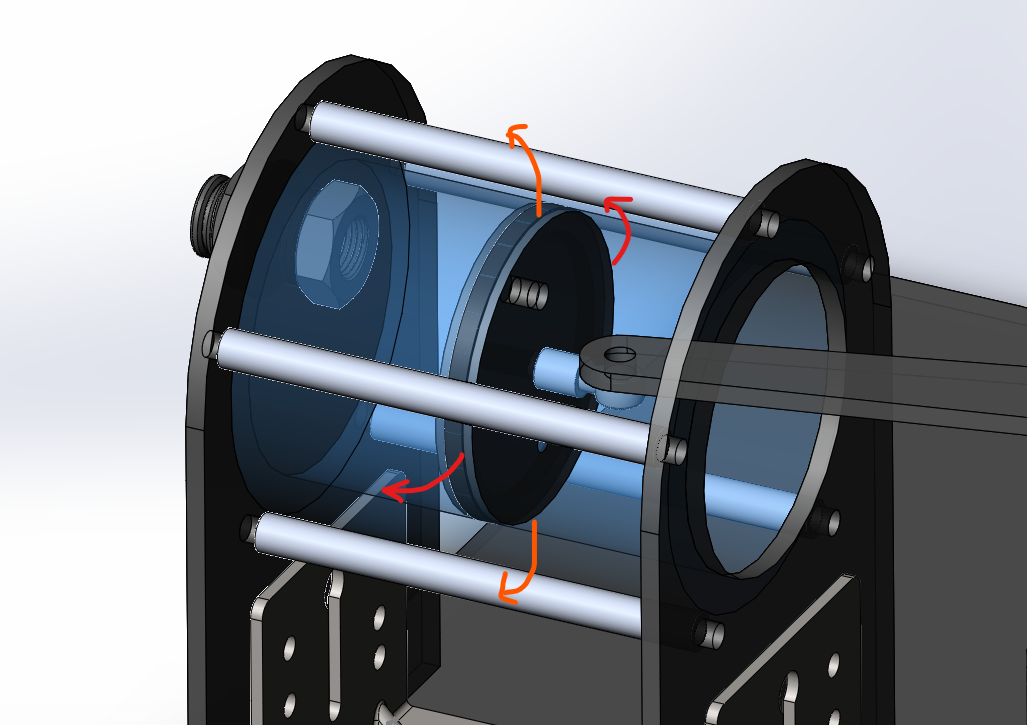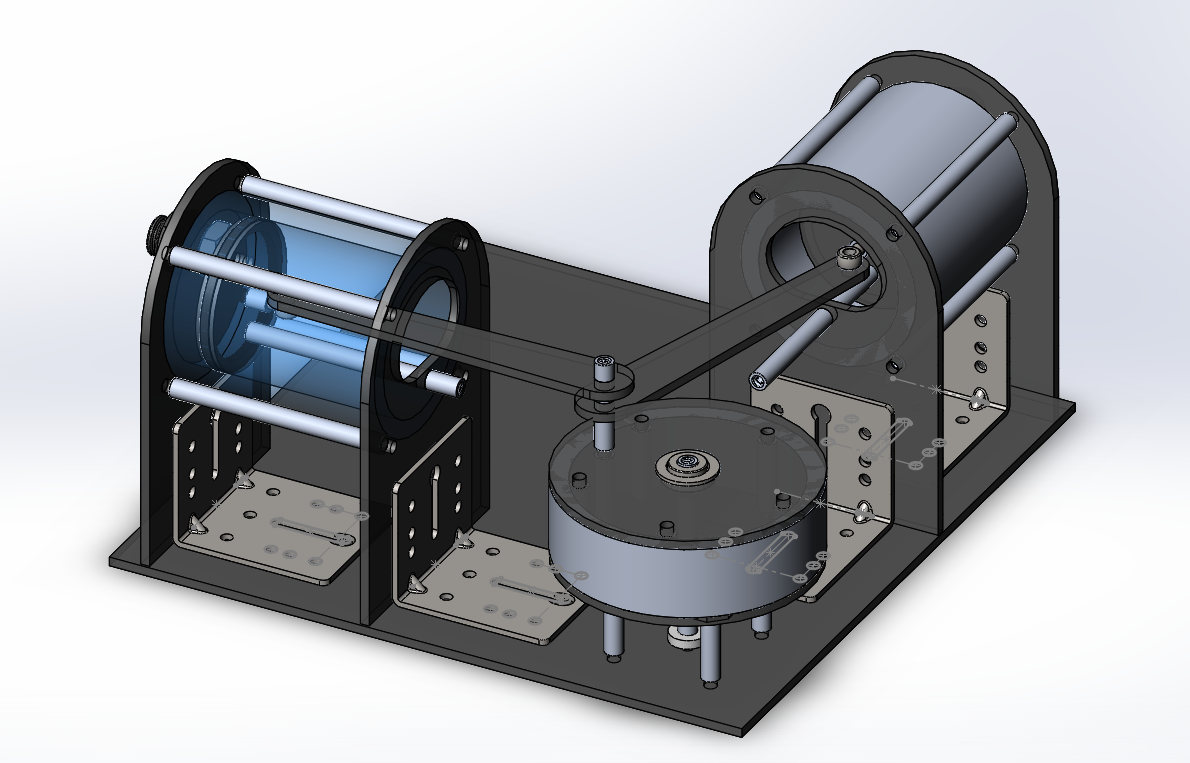Piston Head Instability

I’ve noticed an issue that could result in the failure of the two piston heads within the engine. This is best explained through the diagram above.
The flat face of the piston head should remain perpendicular to the length of the piston cylinder at all times, otherwise the piston chamber will no longer be airtight, and the piston will fail. However, as the arrows indicate in the diagram, in the current design there is a possibility that the piston head could rotate about one of its minor axes. In a perfect world, with a perfect fit between the piston head and the cylinder, this wouldn’t be a concern, but in reality even slight perturbations could knock the piston head out of alignment.
The piston rod might resist some rotation of the piston head in the direction of the orange arrows, but probably not completely, since the Lexan the piston rod is made of can bend. Furthermore, there is nothing preventing a rotation in the direction of the red arrows, so this is definitely a critical flaw in the design.
Luckily, I’ve found a solution just in time, since I haven’t machined these parts yet. I’ve decided to attach a 3” standoff to the front of each piston head to act as a guide. This standoff will pass through a small hole in the Lexan plate at the front of the piston. I don’t want to place another order for just two more standoffs, because of the shipping cost, so I’ve decided to remove one of the 3” standoffs tangent to each piston cylinder, and to reuse those. This will reduce the number of standoffs supporting each cylinder from 5 to 4, which I think should still be sturdy enough.

This should keep the piston head stable as it moves through the cylinder. I’d say the engine is still looking pretty snazzy, if not snazzier. Hopefully it also works!
The flat face of the piston head should remain perpendicular to the length of the piston cylinder at all times, otherwise the piston chamber will no longer be airtight, and the piston will fail. However, as the arrows indicate in the diagram, in the current design there is a possibility that the piston head could rotate about one of its minor axes. In a perfect world, with a perfect fit between the piston head and the cylinder, this wouldn’t be a concern, but in reality even slight perturbations could knock the piston head out of alignment.
The piston rod might resist some rotation of the piston head in the direction of the orange arrows, but probably not completely, since the Lexan the piston rod is made of can bend. Furthermore, there is nothing preventing a rotation in the direction of the red arrows, so this is definitely a critical flaw in the design.
Luckily, I’ve found a solution just in time, since I haven’t machined these parts yet. I’ve decided to attach a 3” standoff to the front of each piston head to act as a guide. This standoff will pass through a small hole in the Lexan plate at the front of the piston. I don’t want to place another order for just two more standoffs, because of the shipping cost, so I’ve decided to remove one of the 3” standoffs tangent to each piston cylinder, and to reuse those. This will reduce the number of standoffs supporting each cylinder from 5 to 4, which I think should still be sturdy enough.

This should keep the piston head stable as it moves through the cylinder. I’d say the engine is still looking pretty snazzy, if not snazzier. Hopefully it also works!